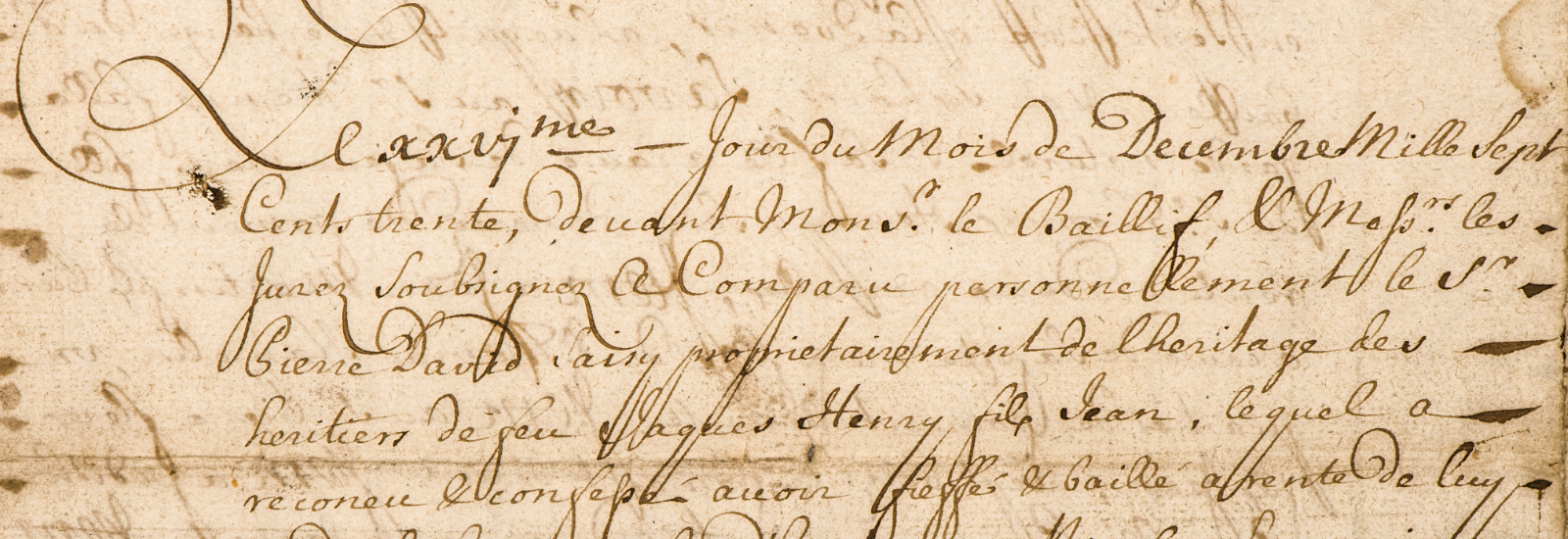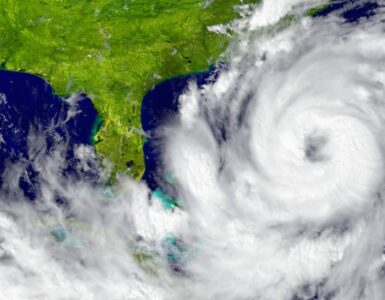At All Saints Church in Dunsden, just outside Reading, a new stained glass window has been unveiled to honour the renowned First World War poet, Wilfred Owen. Ahead of Armistice Day, Reading graduate David Woodward shares with CONNECTED the story behind the window.
David, who studied Typography and Graphic Communication at the University of Reading between 1979-83, shares a short history of Wilfred Owen and what he means to the village of Dunsden.
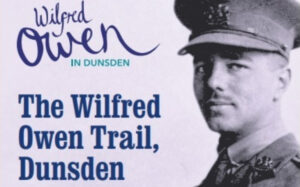
Wilfred Owen is celebrated as an English poet who wrote about the horrors of World War One. He was born on 18 March 1893 on the Welsh borders, but moved to the Thames Valley to pursue his interest in becoming a priest.
David shared more: “With an uncle living in nearby Sonning Common, Wilfred moved to Dunsden in October 1911 to become the lay assistant to the Reverend Hubert Wigan.
“When he arrived he discovered that Wigan had little interest in alleviating the poverty and sickness that beset the local community. Wilfred visited their homes on his bicycle and described one family of 12 as living in a two-room ‘stone box with a straw lid’.
“14 people died during Wilfred’s time in the parish, including two 15-year-olds from diphtheria. In 1912, a family was leaving Binfield Heath to travel to Maidenhead with all their belongings piled on a horse and cart. The mother and four-year-old daughter were sat on top of a sofa on the cart, but the horse bolted and they were both killed.
“These experiences are thought to have contributed to Wilfred’s development as a poet, as he wrote ‘Deep Under Turfy Grass’ following their deaths, which can be seen as the first sign of his mature voice.”
Wilfred also helped mentor two boys to go to Reading Blue Coat School – set up in the seventeenth century to help poor boys get a good start in life. Unfortunately Wilfred’s own academic dreams weren’t quite as successful.
David said: “Wilfred also wished to be admitted to University College, Reading – which later received its charter and became the University of Reading in 1926 – but unfortunately he failed to achieve the grades he needed. Instead, he studied some evening classes at the college which included Botany.
“He also knew, and was influenced by, the pioneering first ever female Professor in England, Edith Morley, and she, I believe, steered him towards studying literature.”
In 1915 Wilfred enlisted for the war and was sadly killed in action on 4 November 1918 aged just 25, one week before peace resumed with the signing of the Armistice.
To honour Wilfred’s time in Dunsden, the Dunsden Owen Association was created in 2014 – when David and other members of the community joined together to commemorate Wilfred’s memory.
Despite only living in Dunsden for 15 months, Wilfred retained connections to the area. His parents lived in Emmer Green, Caversham, and they and his sister are buried at All Saints Church in Dunsden. At the unveiling of the stained glass window on the anniversary of the poet’s death, Wilfred’s great-nephew was in attendance, as well as the 95-year-old son of a boy who had lived in that ‘stone box with a straw lid’.
Combining graphic design and history
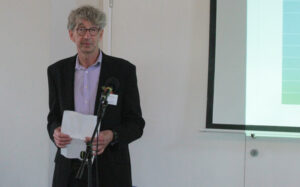
As well as taking on many other community roles, David is an enthusiastic member of the Dunsden Owen Association, offering up his graphic design skills to help bring projects to life.
David shared his inspiration: “When I was a paper boy age 11, the lady who employed me offered me a printing press – which was around the size of a shoebox – and, already an entrepreneur, I agreed to swap my set of Enid Blyton books for it.
“I used this Adana press to produce business cards, tickets and letterheads of a commercial quality for local customers. After using a much larger press loaned by the University to Reading Blue Coat School, to which I had won a scholarship, I decided to continue my love affair with typography at the University of Reading.
“After completing my studies at Reading, I worked as a designer and taught part-time in the Typography Department for over 20 years.”
David is proud to have been part of, and contributed his skills to, a number of Dunsden Owen Association projects over the years.
David said: “Our first event was an exhibition in 2014 which marked the anniversary of the start of World War One. After that, we created a smartphone trail around the village, enabling people to see local places connected with Wilfred’s time here. Then in 2018, on the 100th anniversary of the end of the war, we held a series of lectures in the village hall which Wilfred knew as the village school.
“My other volunteer roles include starting a community orchard, chairing the parish council and being a trustee of the hall. One of my highlights was briefly going on stage with Dame Judi Dench after she helped us raise some of the £400,000 needed to refurbish the building.”
An inclusive design
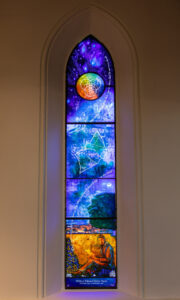
When applications for the prestigious annual Stevens Competition – for young stained glass window designers – came around, the Dunsden Owen Association were delighted to have All Saints Church in Dunsden selected as the subject of the competition.
David explained: “We wanted something that would be striking, modern, and have an enduring appeal. The winner, Natasha Redina, more than delivered on those elements. Natasha’s design stood out for its originality and extraordinary visual appeal.”
After crowdfunding the £17,500 needed for the installation, Natasha was commissioned by the community for the stained glass window.
David said: “The biggest single donation we received was £5000, but there were many much smaller donations – and all of which made a difference. We wanted this project to be funded by the community, so that everyone could be a part of it, and that hope was realised. All our supporters were invited to the dedication of the window which was held in the presence of the Bishops of Oxford and Dorchester and the Deputy Lord Lieutenant of the county, Lady Hall.”
David says that the window is a source of great pride for the community. He said: “Everyone is absolutely delighted with the window and how beautiful it is. Explore the window in more detail.
“We’re also really proud of the inclusivity of this window. Wilfred wouldn’t have used the word himself but he was gay. Natasha incorporated a rainbow coloured wheel into the window design, which, amongst other things, symbolises diversity. It’s very significant that we, and the Church of England, honour his sexuality in this way.
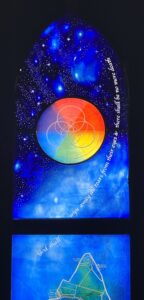 “The colour wheel was created by the German poet Goethe, and the glass for the window was made in both Germany and France. This inclusivity links to Wilfred’s compassion for the victims of war of all nations.”
“The colour wheel was created by the German poet Goethe, and the glass for the window was made in both Germany and France. This inclusivity links to Wilfred’s compassion for the victims of war of all nations.”
Natasha’s window design incorporates the opening line of Wilfred’s poem ‘Deep Under Turfy Grass’ – the viewer’s eye is initially drawn to the bottom of the window which is deep under heavy clay, before ascending to the stars and unknowable universe at the top. You can read more about Natasha’s design and see Natasha’s Instagram account here.
Find out more about the Wilfred Owen Trail around Dunsden and the Dunsden Owen Association here – a recording of the dedication events will soon be available on this website. It was watched in France by the community of Ors, where Wilfred lies buried and which holds an annual event in his memory.
If you wish to view the window, please contact the Association to check on opening times.
With thanks to David Woodward and the websites listed above for information included in this article.

